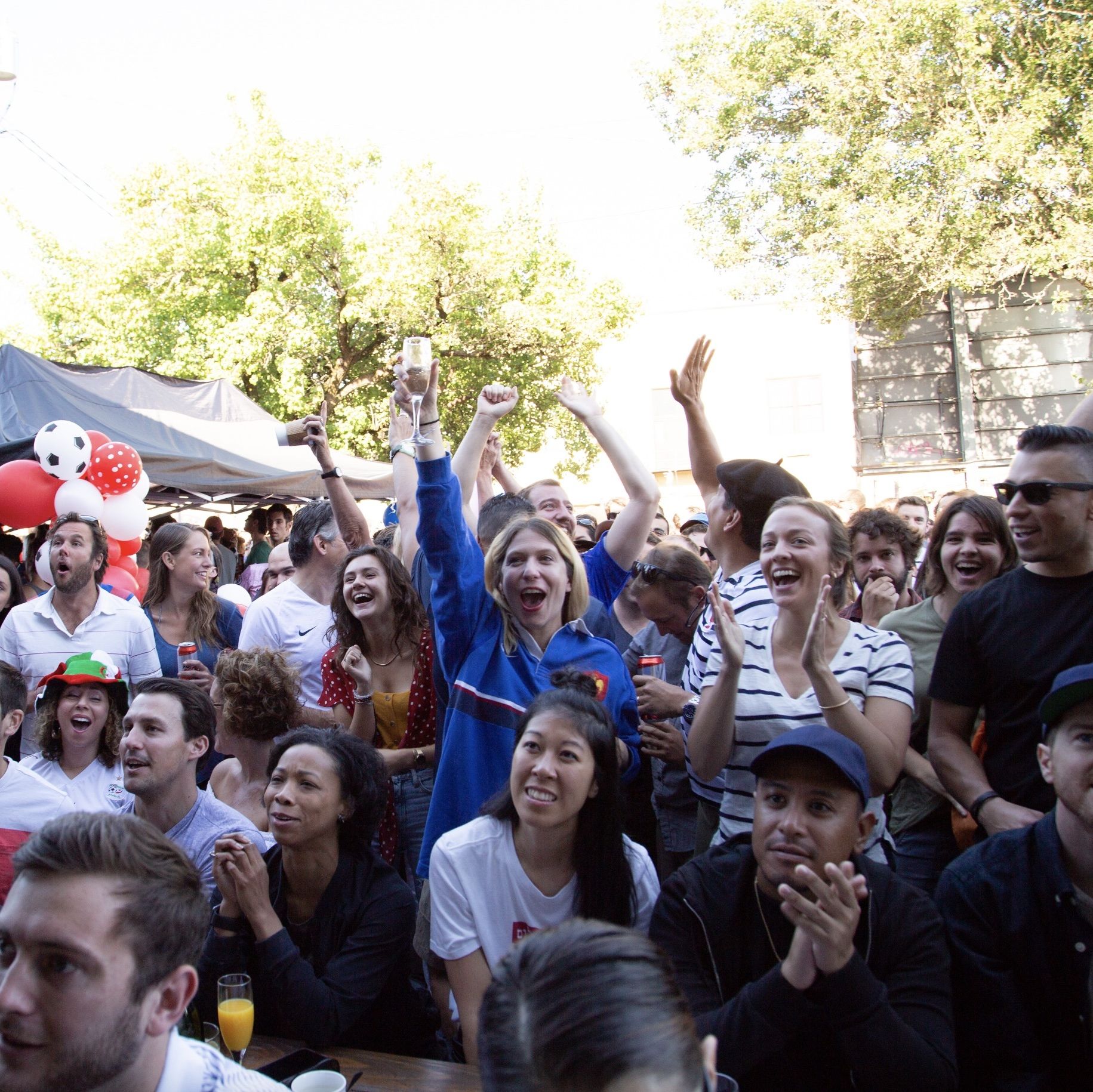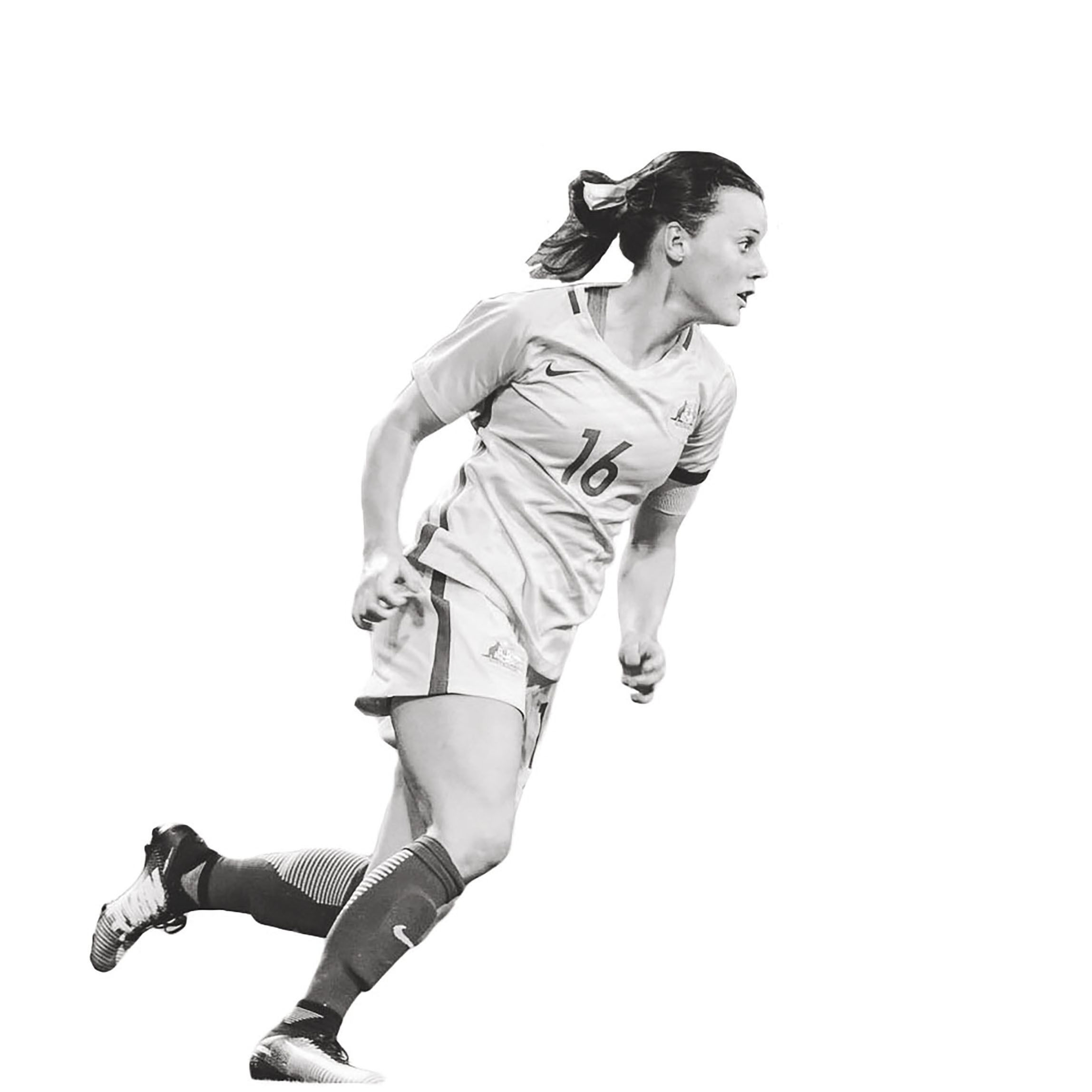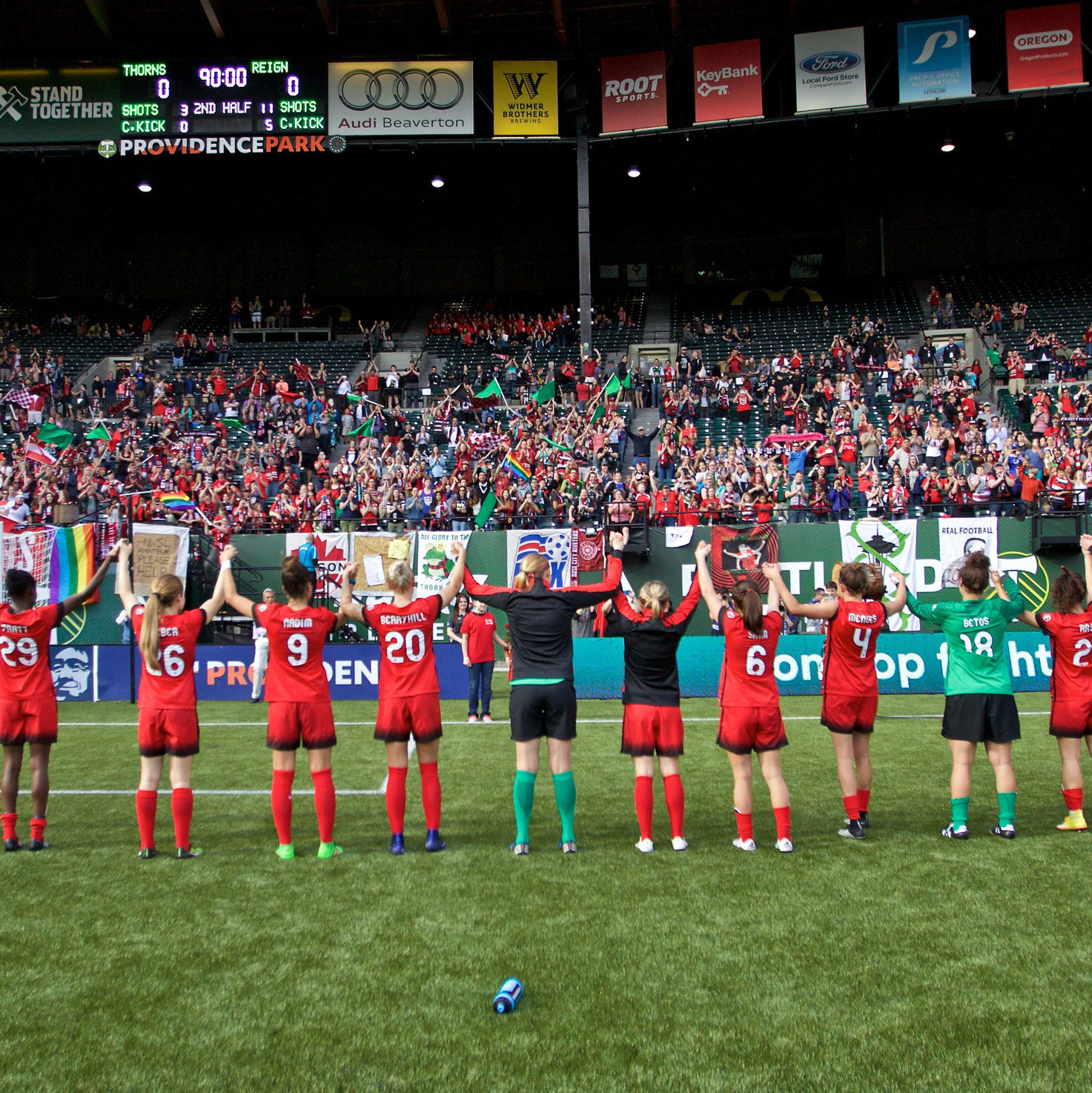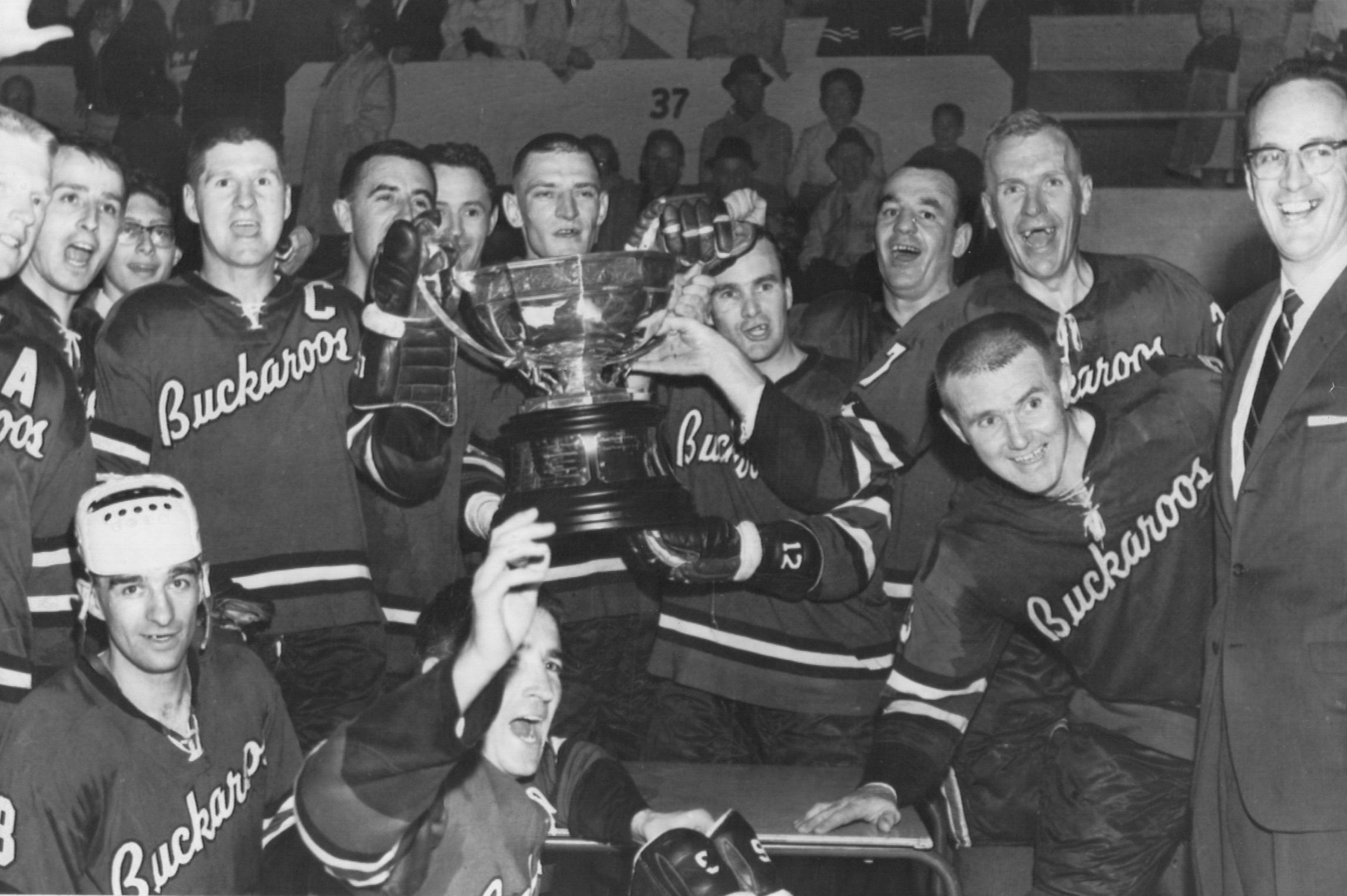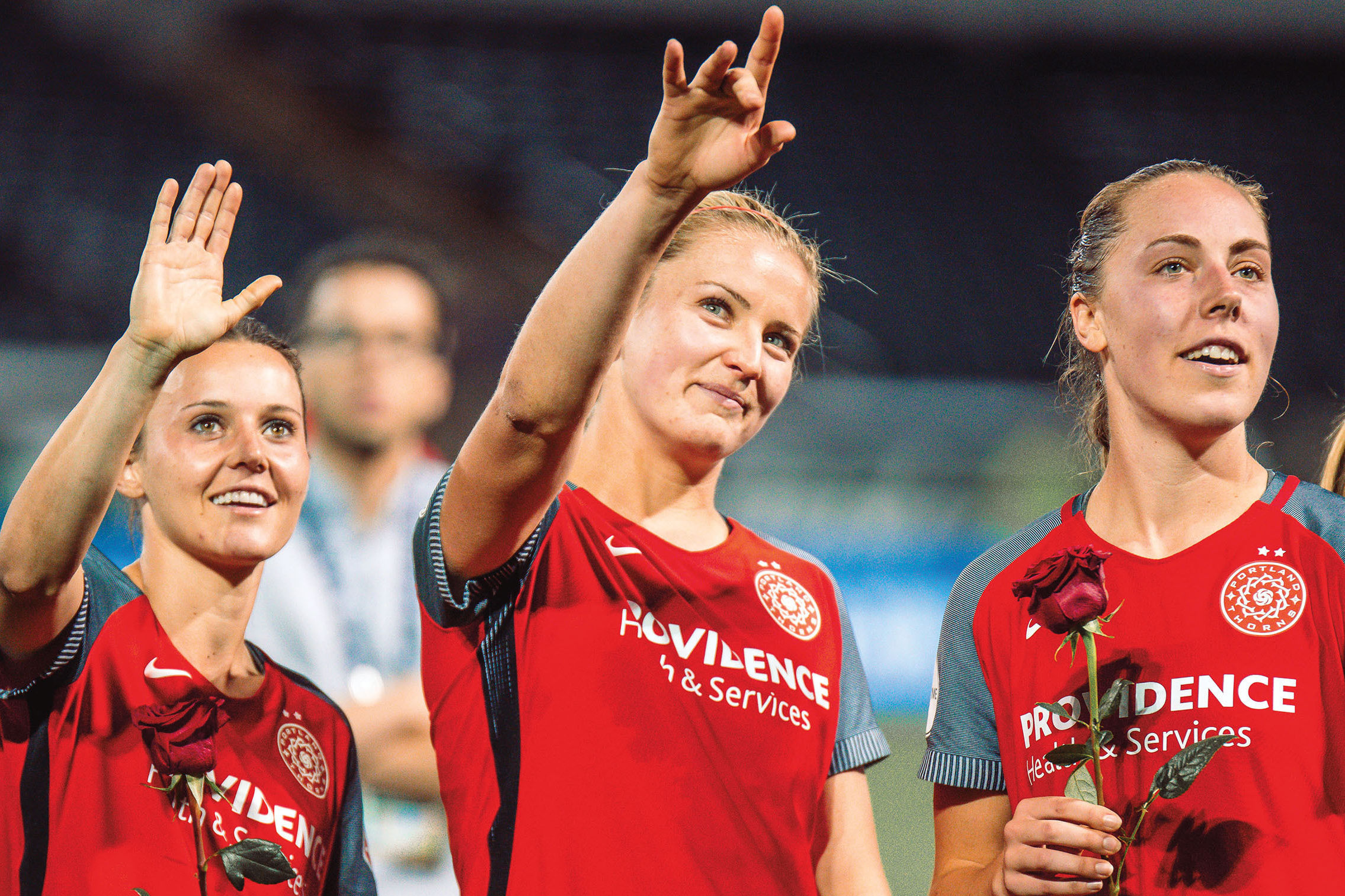
Lindsey Horan Is Redefining Women’s Soccer
Lindsey Horan did not go to college.
If you tune in to the Women’s World Cup, that’s a detail you will probably hear over and over. In broadcasts of Horan’s appearances for the US national team and sports-reel highlights of her game-winning goals for the Portland Thorns, it’s already been repeated so often it’s become a joke among soccer fans, a cliché for media to fall back on.
At the same time, it remains a formative fact about Horan, who is now in her fourth season with the Thorns and is expected to be a key part of the US national team competing in France this summer for its fourth World Cup title.
Most of the players whose names you probably know in women’s soccer—Mia Hamm, Abby Wambach, Alex Morgan—rose to the national team largely through the college pipeline. Thanks to Title IX, the ’70s-era law to promote equal opportunities in education, there were women’s teams at colleges; places like the University of North Carolina, the University of Virginia, and Santa Clara University have traditionally been where experience was gained, while professional leagues sputtered and failed. (The current women’s pro league in the US is still going after six seasons—knock wood.)
The decision Horan made seven years ago—to sign a six-figure pro contract with Paris Saint-Germain in France’s Division 1 Féminine rather than accept a scholarship offer at UNC—was a landmark moment, and the beginning of a career that’s redefining what’s possible for a female soccer player. American women had played in Europe before, where pro leagues are more established (though not necessarily more competitive), but they went after college. Horan is the first bona fide star in women’s soccer to have built her career almost entirely at the club level, on pro teams.
And the only place on earth where she could have done it is Portland.
In 2018, Horan was named league MVP for her role in leading the Thorns to their second consecutive National Women’s Soccer League (NWSL) final, outscoring all but two other players leaguewide in the process. She had officially arrived as one of the best players on the planet. To understand how she got there, you have to rewind a bit.
After four seasons in France with PSG, the Colorado native had made the move to the Thorns in spring 2016, joining a league that hadn’t yet existed when she left for Europe. While based in France she’d gotten a few call-ups for the US national team, whose governing body, US Soccer, also oversees the NWSL. With the NWSL now up and running, it was understood that players who wanted starting spots on the national team would be better off playing in the US league. A knee injury had kept Horan off the 2015 World Cup roster, but in 2016 she was back in the nucleus of the national team. Then something changed.
“I was so consistent with the national team. Right before the Olympics, my starting spot kind of went away,” remembers Horan. “At that point I hit a new low.” Those Olympics were a new low for the national team, too; their quarterfinal loss to Sweden, in which Horan played only a few minutes at the end of extra time, was the US team’s earliest-ever exit from a major tournament.
“I told myself I never wanted to feel that way again, in such a big, important tournament,” says Horan.
Back in Portland, under head coach Mark Parsons (who in 2016 was also in his first year with the team), things were different. With the national team, Horan was one of a couple dozen vying for a coveted starting spot; with the Thorns she was built up, encouraged, and made an integral part of a team that was nearing the end of its most successful season to date.
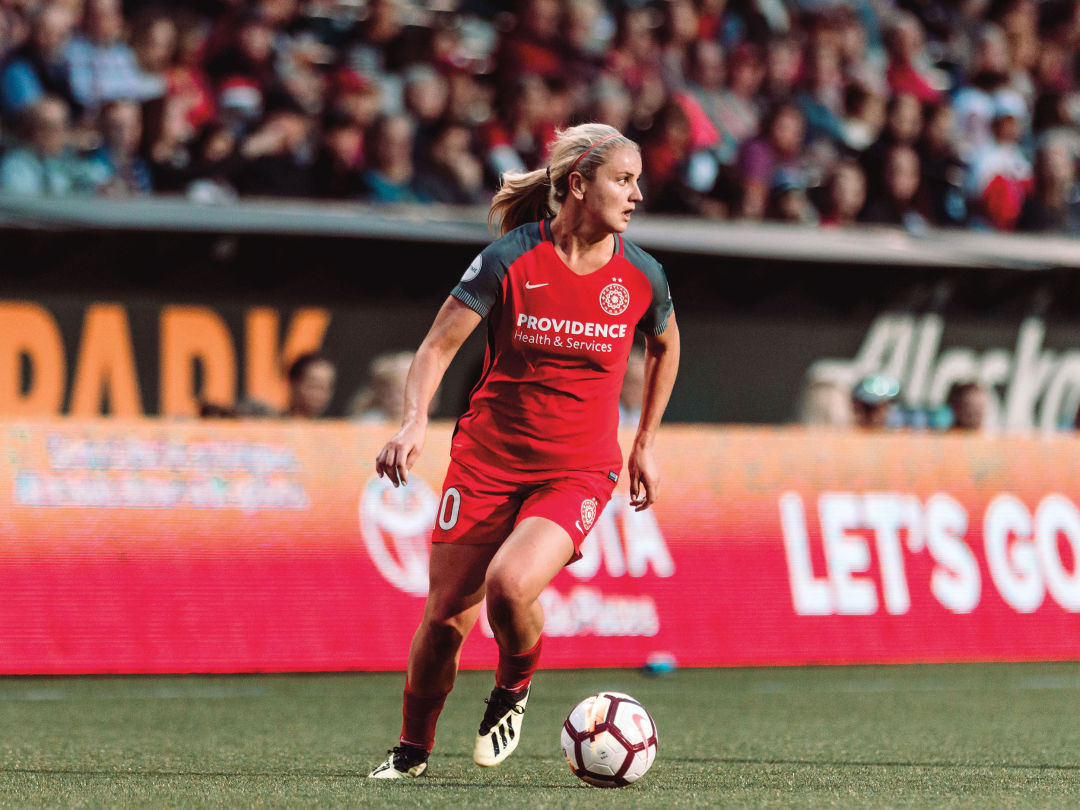
Image: Nikita Taparia
“What Mark did for me after that was huge,” she says. “Like, no matter what I did on the field, he gave me the belief and the trust that I could continuously do it, and no matter how many mistakes I made, he would say, ‘Keep making the mistakes, keep trying things, keep taking those risks.’”
With the national team, whose members are called up from various clubs and even colleges to train together for a limited time before international competitions, players are expected to fit into a relatively structured, rigid system. “They want certain players in certain positions with certain spacing,” explains Horan.
With the Thorns, on the other hand, she was given the freedom to play the game as she saw it. “Here in Portland, I don’t think about where my spacing is on the field. I think I try to create space for myself. I try to create space for other people.”
She’s creating more space, but also covering more ground compared to games with PSG. Parsons says that “by the stress and the miles and the intensity,” players in the NWSL expend far more energy on average than in the French league. That’s something he learned with the arrival of Amandine Henry, who spent 2016 and 2017 as a Thorn before rejoining her French club.
The making of the player Horan is now was gradual. But during the 2017 season, a time when Portland’s midfield was in flux in many ways (due in part to Henry being in and out for the European Championships), one fact crystallized for the Thorns coaching staff: Horan had to be on the ball as much as possible. “When we limit her qualities, or limit the amount of things she can do,” Parsons explains, “we’re not successful.” For Horan, it clicked: “For me as a player, the more I’m on the ball, the more confident I am, the more comfortable I am in the game,” she says.
Though Parsons is quick to give the credit to her (“it’s so easy for a group of staff, when a player turns up and gives their best every day,” he says), that persistent belief and encouragement is what enabled Horan’s transformation from good to transcendent—from a top American player to one of the best in the world.
What exactly is so special about Horan?
Simply put, she’s such an influential player, in every phase of play, in every area of the field, that she defies traditional labels. Terms like “central midfielder” or even “box-to-box midfielder” fail to capture how much she did for the Thorns in 2018. As Parsons puts it, “she did the job of two or three other center mids.”
The archetypal Lindsey Horan play looks something like this: She picks the ball off an opposing forward near Portland’s box, shrugs off a few defenders as they close her down, and threads a pinpoint pass upfield to a teammate. Perhaps 15 seconds later, she reappears in the other team’s penalty area to head an aerial ball into the back of the net.
That last bit—the part where Horan scores—is by no means the most important part of her game, but it might be the thing that puts her over the top as one of the best of her generation. It’s an incredibly rare player who does everything she does in disrupting an opponent’s attack, reading the game, and setting a play in motion for her own team, and then also delivers the all-important finish.
“I think the most exciting part,” says Parsons, “is the ceiling’s nowhere near. She has this hunger and drive to fine-tune so many areas of all these qualities she already had. So it’s really cool to be watching this player every day in season and being a part of that journey.”
Go back 15, even 10 years, and a player like Lindsey Horan would have been impossible. The reason for that is simple: in order to get better, soccer players have to play a lot of soccer, and that can only happen at the club level. A club in a pro league has a five- to nine-month season with games every week, compared to the sporadic friendlies and tournaments played by the national team.
On the men’s side, there are club opportunities all over the world. But for years on the women’s side, there simply was no functional club-level soccer. Teams and whole leagues have floundered and gone bankrupt due to a persistent, systemic lack of investment. Instead, once top players left college, they might train with an actual team only a couple of months out of the year, when they were in national team camp. (Imagine if there were no Major League Baseball teams but still an All-Star Game, one that actually mattered, and we expected players to be in shape for it with just a few weeks’ prep.)
The primacy of the US national team in the public awareness of women’s soccer—of iconic images like Brandi Chastain tearing her shirt off, Carli Lloyd chipping the Japanese goalkeeper from the center circle—is a weird quirk of the American system, part historical accident and part institutionalized sexism. Great players are made at clubs.
“For me as a 17, 18-year-old going over there, I had to grow up super quick and change a lot of things,” Horan says of her early club experience in France. “My maturity on the field, off the field, learning about my body, learning physically what I needed to do, learning from all these older, more experienced veteran players, was so awesome for me at such a young age. Being very open-minded to that and being open-minded to a new culture—I think that’s what really kind of stuck with me and really formed who I am today and the player I am today.”
Today’s young players don’t have to cross an ocean to go pro, or to catch the eye of the national team. Of the two youngest players likely to be on the roster for the World Cup, 2019 NWSL no. 1 draft pick Tierna Davidson is skipping her fourth year at Stanford to join the Chicago Red Stars, and Mallory Pugh, a Colorado native like Horan, passed up a spot at UCLA to turn pro with the Washington Spirit in 2017.
For many, though, the dream destination is Portland, which holds a special status in the ecosystem of women’s soccer. While the Thorns’ coaching staff and the training environment have been crucial to Horan’s development, there’s also the culture of pro soccer in the city itself. It reflects how Horan has always related to the sport, and what the Thorns represent within the landscape of the women’s game.
Growing up, Horan obsessively followed FC Barcelona, home to men’s legend Lionel Messi. “I would skip school to go home and watch Champions League games,” she remembers. A video produced by the Players’ Tribune shows her childhood bedroom, plastered with Barça posters and Messi jerseys. “It was like, this is what I want to do, this is what I want to play in,” she remembers. “I want to be in Europe, I want to be amongst that culture and these players and see these games.”
And while living in France allowed her to immerse herself in that culture, playing for PSG Féminines is nothing like playing for FC Barcelona. The concept of a club, a team whose fans bleed their colors and whose players kiss the crests on their jerseys after they score, is still a rarity in women’s soccer, even in Europe’s more established leagues. The only place in the world where that kind of intense love and devotion exists around a women’s club, in fact, is Portland. It’s here that Horan plays in front of an average of nearly 17,000 fans per game (nearly twice the average of any other team in the NWSL), where Great Gatsby–inspired banners declare her “The Great Horan” and 62,000 Twitter followers are ready to celebrate the #Horanimal’s latest header.
The simplest way to know this is to go to a Thorns game and see it for yourself. Stand in the North End before the game starts and feel the air crackle with anticipation as the stadium fills up. Watch the rafters shake when a player in red puts the ball in the back of the net—perhaps Horan, once the national team players come home to their clubs after the World Cup. (Other Thorns expected to represent the US this summer are defender Emily Sonnett, 2018 NWSL goalkeeper of the year Adrianna Franch, and midfielder Tobin Heath, who played a season with Horan at PSG.) Take in the ecstatic joy of a win, or the crushing devastation of a big loss. Providence Park is the only place on earth where this particular scene can be found week in and week out.
“Coming here was exciting for me,” Horan says. “I’d heard so much from Tobes, and then seeing so much of what this club tries to do, the fans, and everything.”
Last fall, after Horan was named league MVP, an Adidas billboard appeared in downtown Portland. “Pro at 18. League champ at 23. MVP at 24,” read a series of bold red and white panels. On the fourth panel, with the text “creators are never finished,” was Horan’s face, four stories high, in a moment of wild celebration.
She was wearing a Thorns jersey.
